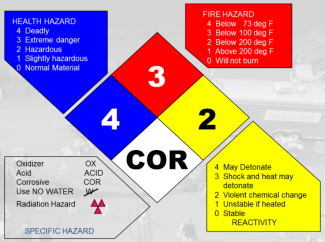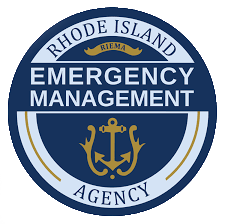Hazardous Materials
Chemicals that are dangerous to human health can be found almost everywhere and are used on a daily basis. Therefore, a hazardous material incident could occur anywhere at any time and it could occur in a variety of ways.
In addition to chemicals, explosives, flammable and combustible substances, poisons and radioactive materials are examples of hazardous materials that, if used improperly or incorrectly, could create a life-threatening incident.
Prepare Now. Download our Hazardous Materials Safety Guide to keep you and your family prepared for any hazardous materials-related incident.
Identifying Hazardous Materials
The National Fire Protections Association’s 704 System is a standardized system that utilizes numbers and colors on a sign to indicate the basic hazards of a specific material being stored in large containers.
The hazard identification signal is a color-coded array of four numbers or letters arranged in a diamond shape. You will see hazard diamonds, like the one shown below, on trucks, storage tanks, bottles of chemicals, and in other various places. The blue, red, and yellow fields represent health, flammability, and reactivity, respectively. Each uses a numbering scale ranging from 0 to 4. A value of zero means that the material poses essentially no hazard; a rating of four indicates extreme danger. The fourth value (associated with white) tends to be more variable, both in meaning and in what letters or numbers are written there.

Additional Resources
Local Emergency Official Contacts
Local Emergency Planning Committee
Local Evacuation Routes
NFPA 704 System
State Emergency Response Commission
